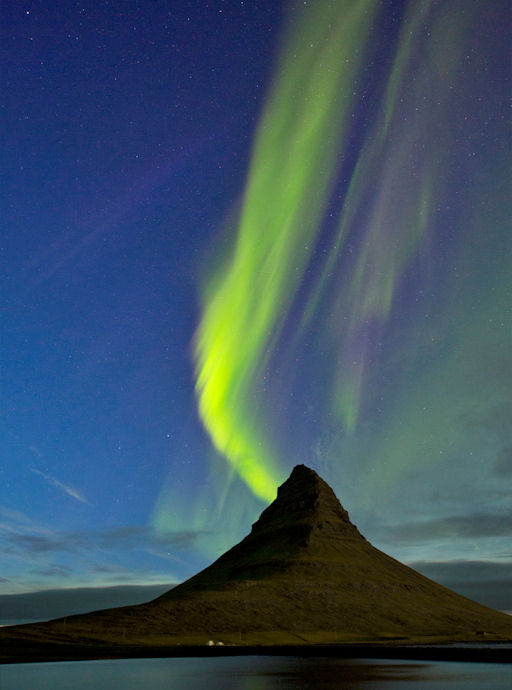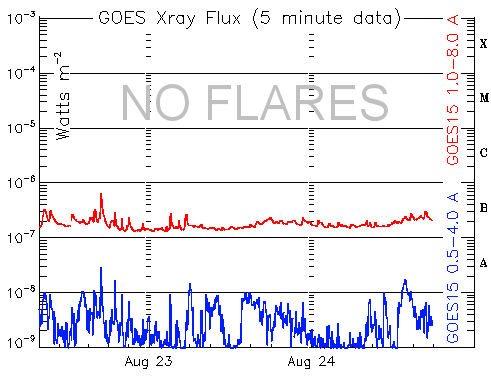They came from outer space--and you can have one! Genuine meteorites are now on sale in the Space Weather Store. | | | RADIATION BELT STORM PROBES: Most spacecraft try to avoid the Van Allen Belts, two doughnut-shaped regions around Earth filled with "killer electrons." NASA is about to launch two heavily-shielded spacecraft directly into the belts. The Radiation Belt Storm Probes are waiting on the launch pad at Cape Canaveral to begin a 2-year mission to study the Van Allen Belts and unravel the mystery of their dangerous unpredictability. Liftoff is scheduled for Saturday, Aug. 25th. [Launch Blog] ICELAND AURORAS: As the midnight sun sets, aurora season has resumed around the Arctic Circle. Last night's display was photographed by Antony Spencer from Kirkufell, Snaefellsnes, Iceland: 
"The midnight sun is now long gone in Iceland," says Spencer. "I was heading back from a sunset photo shoot when I noticed the auroras. They were bright enough to see right through the sunset colors." More auroras are in the offing. A stream of solar wind is heading for Earth, due to arrive on August 26-27. Arctic sky watchers should be alert for auroras. Aurora alerts: text, phone. Realtime Aurora Photo Gallery FLATLINING: WIth no sunspots actively flaring, the sun's x-ray output has nearly flatlined. These data from NOAA's GOES 15 satellite show how quiet things have been on August 23rd through 25th: 
NOAA forecasters say there is no more than a 1% chance of strong flares today. However, a new sunspot is emerging that could break the quiet. Amateur astronomers with solar telescopes should train their safely-filtered optics on this location to see sunspot genesis in action. Realtime Space Weather Photo Gallery
Realtime Noctilucent Cloud Photo Gallery
[previous years: 2003, 2004, 2005, 2006, 2007, 2008, 2009, 2011] Potentially Hazardous Asteroids ( PHAs) are space rocks larger than approximately 100m that can come closer to Earth than 0.05 AU. None of the known PHAs is on a collision course with our planet, although astronomers are finding new ones all the time. On August 24, 2012 there were potentially hazardous asteroids. Notes: LD means "Lunar Distance." 1 LD = 384,401 km, the distance between Earth and the Moon. 1 LD also equals 0.00256 AU. MAG is the visual magnitude of the asteroid on the date of closest approach. | | The official U.S. government space weather bureau | | | The first place to look for information about sundogs, pillars, rainbows and related phenomena. | | | Researchers call it a "Hubble for the sun." SDO is the most advanced solar observatory ever. | | | 3D views of the sun from NASA's Solar and Terrestrial Relations Observatory | | | Realtime and archival images of the Sun from SOHO. | | | from the NOAA Space Environment Center | | | the underlying science of space weather | | 
